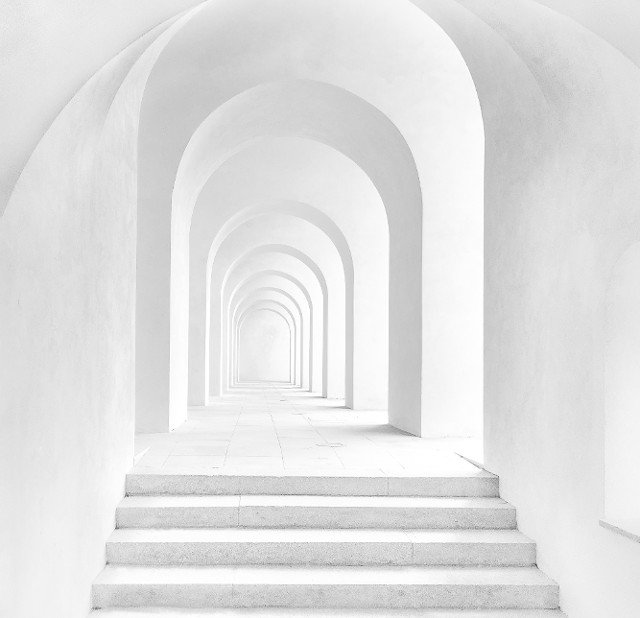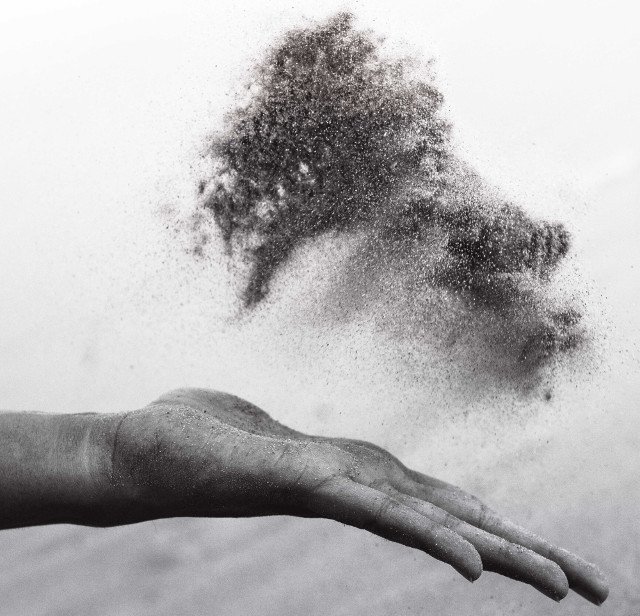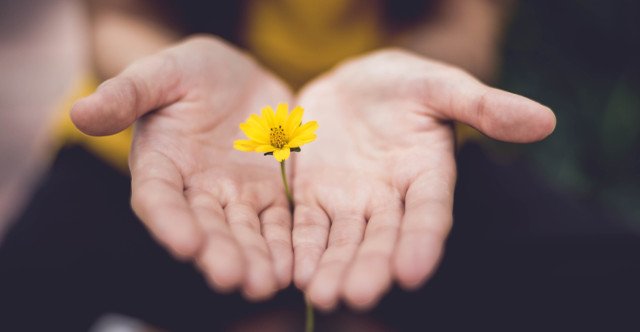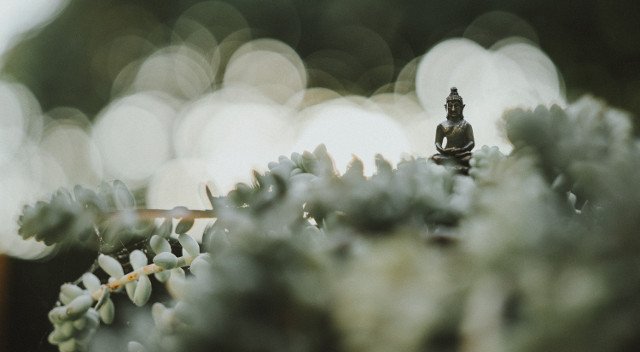11 Aug How to find your right meditation
Author: Shai Tubali
Category: Spiritualität allgemein
Dieser Beitrag ist auch in deutscher Übersetzung erschienen: Klick hier, um ihn auf Deutsch zu lesen!
It is not easy to choose a meditation. The meditation “market” offers an overwhelmingly vast array of techniques, all shining brightly and full of great promises for profound experiences and long-term transformations. Yet surely, many of them are not necessarily suitable for us – though who could tell what “suitable” exactly means? Would “suitable” imply a technique that feels effortless, natural and in line with our character and inclination? Or would “suitable” be a meditation that goes against our character and compels us to transcend ourselves and overcome our automatic patterns and therefore, feels at times unnatural and even uncomfortable?
Some of us may stumble across a certain impressive figure – a spiritual teacher or authority – whom we wholeheartedly trust. Based on this fundamental trust, we go along with the meditation that they teach their students or recommend the most. Here too, however, there is a potential trap: this would not necessarily be the technique that could liberate us. After all, there is no one meditation for all, just as there is no one diet that fits everyone’s lifestyle and physical needs – and yes, even if that particular meditation has been tested for thousands of years and has been fervently cherished in the spiritual stream we greatly honor.
Interestingly, our chakra system offers us an inner compass that could assist in finding our right meditation. This ancient and wise system teaches us more than the seven levels of existence which we are meant to develop and cultivate in order to become free, complete and “enlightened.” It also reveals to us that each individual has one chakra that is more active and strong than all of the rest. Through this major chakra we experience reality, and it is therefore the one that gives shape to the most intense and meaningful tendencies of our personality. This system is called “The seven chakra personality types.”
Getting to know our major chakra (and later on, the two secondary chakras that support it) could lead us to the type of meditation that most directly and effectively speaks the language of our “soul.” When a meditation technique speaks in the language that our depths recognize and respond to, it holds the power to free us and broaden our awareness in the most transformative way. It is the meditation that is most synchronized with our constitution and with it, we can naturally flow towards the revelation of our true nature.
Here is a brief introduction of the seven chakra personality types and their ideal type of meditation. Try to find yourself in the descriptions. Notice that I have also added what I call a “complementary” meditation. The complementary meditation is the type of techniques that also ensures that we challenge and shake our natural constitution from time to time. Only going along with our constitution might eventually bring us to the very opposite of the original intention of meditation, which is to take us beyond our known limitations. It could make us overly identified with our individual structure and, in this way, prevent us from realizing the possibility of true inner freedom.

Root Chakra Personality Types: The “Builders”
“Builders” are keenly interested in the material world: structures, substances, machines, and inherent laws and orders of the world and the universe. They have a great patience for the long and arduous material processes and enjoy routine, the sense of gradual and diligent building, and the creation of a safe and healthy environment. They cherish the feeling of belonging to solid and stable collectives, such as family units, nations, religions, and spiritual lineages.
Since they feel most at home when provided with a clear framework, they require the habit of daily closed-eyed meditations at the same hour and with a practice that doesn’t change but only deepens. They need techniques that have been tested for thousands of years and also, techniques that do not forcefully involve fireworks and extreme experiences. In their case, Vipassana and mindfulness techniques could be marvelous options.
Their complementary meditation should be to go every now and then to more intense forms of meditation, such as silent retreats, that could take them beyond their well-contained practice and challenge their attachment to the physical world.
Sacral Chakra Personality Types: The “Artists”
“Artists” are passionate lovers of life, who are driven by a sense of adventure and by the constant search for peak experiences and heightened feelings. They abide in the here and now and, like butterflies, enjoy the most flying around, spreading their charm, and shortly experimenting with life’s different flavors and possibilities. They are reluctant to commit, and prefer to stay forever young, out of their strong intuition that life is not a burden but a colorful and sensual event that should be fully appreciated for its beauty and pleasure.
“Artists” belong to the world of Tantra: an open-eyed type of meditation that works with the senses rather than suppressing them. They cannot comply with a routine of one practice, which requires self-discipline and quietude, as they are too restless. Their best meditations are dynamic and include dance, musical journeys, laughter meditations, tantric practices, and abiding in nature. They can also immerse themselves in artistic expression, which in the right context can be a meditation too.
Their complementary meditation needs to be listening to wisdom and self-inquiry. Since they can easily become overly attached to the sensual experience, they require some balancing clarity of mind and tools of discrimination.

Solar Plexus Chakra Personality Types: The “Achievers”
“Achievers” are the world’s conquerors, warriors at heart who continuously pick destinations and mountaintops to reach and stick their flag on. They become exhilarated at the thought of challenge and they like to push their own limits as well as everyone else’s. They are highly self-disciplined, energised and motivated, and feel that they need to be number one at anything they do. Accordingly, they are intense “doers” who overpack their schedules and feel most alive when they run around from one work meeting to another.
“Achievers” require spiritual practices that demonstrate and activate their wish for self-overcoming and self-discipline. They need to feel that they push against their limits and that their meditations are successful. They therefore should seek out practices that resemble gym exercises in spirit: strong breathing practices, meditation marathons, firewalking, fasting, and intense yoga asanas that lead to silence, are all good examples.
A vital complementary meditation for “Achievers” is relaxation techniques. They must not engage only in difficult and demanding practices, which might keep them stuck in their identification with over-doing. From time to time, they need to cool down with just being.
Heart Chakra Personality Types: The “Caretakers”
“Caretakers” are sensitive and delicate beings who are most intensely inclined toward human relationships, connectivity and experiences of union with others and the world. Their being is governed by the emotional world, and they feel that true intimacy and sharing one’s being with another are the peak of human experience. They naturally find themselves deeply devoted to someone or something and they are generous givers and often, compassionate activists. Their way of knowing and telling true from false is the heart.
“Caretakers” need to be mainly engaged in open-eyed type of meditations, since it does not make much sense to them to detach from the world and from others and to go into themselves. Their meditations need to be centered on devotion and the complete focus on the “other,” which could also be a deity or a guru. Their meditations can also be active giving to others, like helping those in need within the context of dedication to the higher reality. Sacred singing, prayer, and other heart-opening practices, could fit them well.
Their complementary meditation is to sometimes enter silent retreats or any practice that requires seclusion, in order to experience freedom from all dependency. As beautiful as their life’s focus is, they must also remember that the aim of meditation is to show us ourselves.

Throat Chakra Personality Types: The “Speakers”
“Speakers” are inspired individuals who are driven by grand visions and dreams. Their gaze is fixed on far horizons and distant futures, which often prevent them from realistic responses to life in the present and keeps them idealistic and dreamy. They love ideas, systems of thought and brilliant solutions that could change everyone’s life, and they are the best messengers and bringers of new perceptions. They are charismatic and magnetic leaders by nature, and are able to influence their listeners by recognizing their deep needs.
As strong believers in the power of the word, “Speakers” naturally seek meditations that are based on the transformative power of words. They are drawn to words and statements which seem capable of manifesting new realities. Accordingly, their ideal meditations are those which involve mantras, chanting, affirmations, and “secret” prayers. Such mantras and statements can be either silent or vocal – as long as they create a strong and far-reaching resonance in both their minds and lives.
A complementary meditation for “Speakers” is silence. Sometimes refraining from using their voices and moving away from the verbal world could balance their attachment to words and speech. Being unable to influence and shape reality for certain periods is a source of great rejuvenation for them.
Third-eye Chakra Personality Types: The “Thinkers”
“Thinkers” are the world’s observers. They look at the human experience from a far distance, often forgetting that they themselves are in a human body and in need of learning from actual bodily experiences. They always seek to understand life’s mystery and to answer the biggest questions, and their mind is thirsty for learning and knowledge. They are attentive listeners, inwardly silent, and tend to find themselves buried in books, researching in the academic world or writing down their original and unconventional thoughts.
Since the “Thinkers’” third eye is forever open, they clearly require an open-eyed type of meditation, which allows them to wakefully observe and inquire. Their ideal meditation is all sorts of self-inquiry, striving to attain insights into profound questions. Practices such as “Who am I?,” “Who is in?”, zen koans, and even simply holding a big question in their mind for long periods of time, are all good examples. They can even find themselves meditating by reading scriptures and words of philosophical or mystical wisdom.
The complementary technique for “Thinkers” is any experiential form of meditation. Whether it is the practice of lovingkindness, dynamic meditation, meditation in nature, or walking meditation, they must not neglect the challenge of disappearing into experience rather than purely “studying” it from afar.

Crown Chakra Personality Types: The “Yogis”
“Yogis” are natural-born renunciates who are intensely drawn to the study of the inner worlds and the subtle realms of reality. They are monks at heart, and even if they do not find themselves in ashrams or monasteries, they live in a cave-like lifestyle, highly introverted and quite indifferent to the world’s drama. They deeply feel that they do not belong to the material world, and this profound alienation leads them to dwell in the spiritual life and in their identity as a pure spirit. They often find it difficult to work, make money and answer life’s intense demands.
Since “Yogis” are meditators by their very nature, it is quite easy for them to immerse for long hours in spiritual practice, forgetting all of their duties and also neglecting themselves. Their obvious type of meditation is closed-eyed and highly detached. Though they may use methods of concentration, mantras, or visualizations, their main form of meditation is just being and silencing their minds while sitting motionlessly. Techniques that activate the subtle anatomy, such as Kriya Yoga, Chakra meditations and spinal breathing, suit them as well.
The complementary meditation of “Yogis” is all types of practices that align physical movement, breathing and mind. Asanas done in meditation, mindfulness techniques, walking meditation, and any mundane task, such as tending the garden as a meditative practice, could balance their natural detachment.




Keine Kommentare